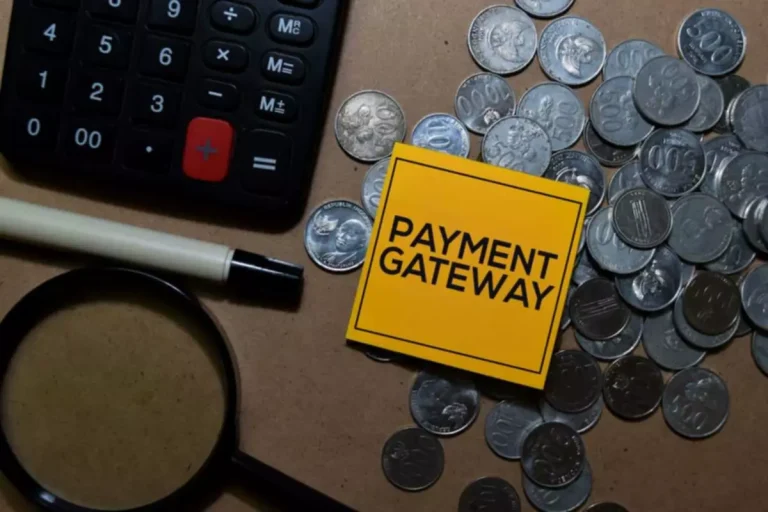Without liquidity suppliers, the liquidity or availability of any given safety couldn’t be assured, and the flexibility of consumers and sellers to purchase or sell at any given time could be diminished. There has never been a greater time for individuals interested in exploring and taking part in liquidity pools. Engaging with these decentralized financial devices allows people to faucet into diverse investment opportunities, irrespective of geographical or monetary constraints.
Interoperability and cross-chain liquidity are pivotal future developments in crypto, but in addition they present important challenges. With the proliferation of diverse blockchain networks, enabling seamless communication and switch of assets throughout chains becomes imperative. The most liquid stocks are typically these with quite lots of interest from varied market actors and lots of day by day transaction volume. Such stocks may even attract a bigger number of market makers who maintain a tighter two-sided market.
Monetary Institutions
For instance, if an individual wants a $1,000 fridge, cash is the asset that may most easily be used to obtain it. If that individual has no money however a rare e-book assortment that has been appraised at $1,000, they’re unlikely to search out someone prepared to commerce the fridge for their assortment. Instead, they will have to promote the collection and use the cash to buy the refrigerator. Yarilet Perez is an skilled multimedia journalist and fact-checker with a Master of Science in Journalism. She has worked in multiple cities masking breaking news, politics, training, and more.
In some instances, customers can turn out to be crypto liquidity suppliers, amassing part of the transaction charges as a reward for contributing liquidity to the system. Financial markets remain liquid—meaning traders can constantly purchase and sell belongings on demand—thanks to core liquidity providers. These are usually banks and other financial companies that purchase and promote large portions of belongings to make sure their availability.
Some exchanges supply governance tokens or different native tokens to add liquidity to their platforms. Having numerous currency pairs is a method to indirectly enhance a token’s liquidity, because it permits users to trade their tokens for various different tokens. For instance, low liquidity leads to slippage, a problem in which the precise returns on a token sale are less than what the anticipated worth would have brought. In other words, the worth received is lower than the price named at the beginning of a commerce. Most decentralized exchanges let users specify slippage tolerances to restrict their losses. The market makers for these futures have to handle their own threat by shopping for and selling bodily cryptocurrencies, thereby deepening the general market liquidity.
These liquidity swimming pools make use of each blockchain technology and smart contracts to determine decentralized markets where participants can offer liquidity and profit. Participants in these pools can deposit pairs of property, usually cryptocurrency, to facilitate trading within the pool. A core liquidity provider is an middleman that trades significant quantities of belongings to help be sure that market members can constantly purchase and promote property after they want. Liquidity providers carry out essential functions in the market similar to encouraging price stability, limiting volatility, lowering spreads, and making buying and selling cheaper. Banks, monetary institutions, and buying and selling companies are key gamers in providing liquidity to completely different parts of the financial markets.
Understanding Liquidity And The Means To Measure It
When a dealer needs to make a commerce on a DEX, they work together with the liquidity pool contract. The contract mechanically calculates the price of the belongings being traded primarily based on the ratio of property in the pool. This ensures that the value is always correct and reflects the market worth of the assets being traded. This market order price that is utilized in times of high volatility or low quantity in a conventional order e-book model is determined by the bid-ask unfold of the order e-book for a given buying and selling pair. This means it’s the middle point between what sellers are willing to sell the asset for and the worth at which buyers are keen to buy it. However, low liquidity can incur extra slippage and the executed trading value can far exceed the unique market order worth, depending on the bid-ask spread for the asset at any given time.
A liquidity pool is a crowdsourced pool of cryptocurrencies or tokens locked in a smart contract that is used to facilitate trades between the belongings on a decentralized change (DEX). There are many alternative DeFi markets, platforms, and incentivized swimming pools that let you earn rewards for offering and mining liquidity by way of LP tokens. Yield farming is the practice of staking or locking up cryptocurrencies within a blockchain protocol to generate tokenized rewards. The idea of yield farming is to stake or lock up tokens in numerous DeFi applications to find a way to generate tokenized rewards that assist maximize earnings. This kind of liquidity investing can mechanically put a consumer’s funds into the best yielding asset pairs.

Of the current property considered extremely liquid, cash ranks at the top of the list. Other kinds of property, such as marketable securities, accounts receivable, inventory and prepaid bills, are less liquid because they have to be sold to be transformed into cash. If a marketplace for a digital asset is illiquid, investors and speculators would count on to see a wider bid-ask spread, making it costlier to transact in that digital asset. The futures markets enable investors to commerce contracts, or agreements, to buy or promote cryptocurrencies at a pre-agreed later date in a developed and transparent manner. As a end result, anytime you sell or purchase, there will at all times be market members prepared to do the alternative.
What Is Liquidity And The Way Does It Have An Effect On The Inventory Market?
An operational crypto liquidity pool must be designed in a means that incentivizes crypto liquidity suppliers to stake their property in a pool. That’s why most liquidity suppliers earn buying and selling charges and crypto rewards from the exchanges upon which they pool tokens. When a user supplies a pool with liquidity, the provider is commonly rewarded with liquidity supplier (LP) tokens. LP tokens can be valuable assets in their very own proper, and can be used throughout the DeFi ecosystem in varied capacities. Banks with giant stability sheets can accommodate sizable transactions, enabling them to make markets for numerous monetary belongings. For instance, the world’s largest banks are core liquidity suppliers in the overseas change markets.

When a retail investor buys a safety from a buying and selling firm that’s acting as principal, the agency fills the order using its personal stock, allowing it to benefit from the bid-ask spread. Smart contracts, whereas revolutionary in their capability to automate transactions on the blockchain, come with inherent dangers and vulnerabilities. These digital agreements are prone to coding errors, resulting in unintended penalties and monetary losses. Vulnerabilities corresponding to reentrancy assaults, unchecked external calls, and integer overflow can be exploited by malicious actors, compromising the integrity of the contract. Liquidity swimming pools provide quite a few advantages; among them is the significant reduction in obstacles to entry.
Liquidity Providers (lps)
Many DeFi exchanges allow market makers to create a number of liquidity pools with varied tokens. For example, someone may create one liquidity pool where users can change ETH for HBAR and another where they’ll commerce USDT for HBAR, creating further liquidity for the HBAR token. Liquidity pools are a key innovation in DeFi, providing a decentralized, permissionless approach to commerce assets on a DEX. They permit anyone to provide liquidity and earn rewards for his or her contributions, creating a extra inclusive monetary system. As DeFi continues to develop and evolve, liquidity pools will doubtless play an increasingly necessary role in facilitating decentralized buying and selling and financial services.
DeversiFi’s commitment to transparency, privacy, and user-centricity has solidified its place as a go-to platform for merchants in search of liquidity and adaptability in the ever-evolving crypto landscape. By eliminating the need for traditional order books, Bancor provides efficient and secure token swaps whereas sustaining low slippage and price https://www.xcritical.in/ stability. Its intuitive interface and seamless integration make it a well-liked choice amongst customers, empowering them with quick access to decentralized liquidity pools and fostering vibrant token ecosystems. Convexity Protocol is a prominent liquidity protocol, empowering decentralized finance enthusiasts with environment friendly capital deployment.
Bancor Protocol
Liquidity refers to how easily customers can commerce one cryptocurrency for an additional on an change. On a decentralized exchange, liquidity correlates immediately with the amount of tokens locked in a liquidity pool. If a token lacks liquidity, holders may not be succesful of promote their tokens when they wish.
Liquidity pools allow users to purchase and sell crypto on decentralized exchanges and other DeFi platforms with out the need for centralized market makers. Core liquidity suppliers make a market for an asset by providing their holdings for sale at any given time while concurrently shopping for extra of them. But it additionally permits investors to purchase shares every time they wish to without ready for one more investor to resolve to promote. To mitigate impermanent Loss, LPs can make use of strategies corresponding to impermanent loss insurance coverage, yield farming, or selecting pools with lower volatility. However, it’s crucial to completely analyze the dangers and potential rewards before participating in liquidity pools. First, a wise contract is written, defining pool functionalities like token swapping and charges.
- This incentivizes liquidity provision and fosters a vibrant ecosystem of liquidity providers.
- Before automated market makers (AMMs) came into play, crypto market liquidity was a challenge for DEXs on Ethereum.
- Token costs in liquidity swimming pools may vary on completely different exchanges or for various asset pairs, although arbitrage traders usually regulate the value by buying and promoting assets into various swimming pools.
- Vulnerabilities corresponding to reentrancy assaults, unchecked exterior calls, and integer overflow could be exploited by malicious actors, compromising the integrity of the contract.
- In different words, liquidity describes the degree to which an asset can be shortly purchased or sold out there at a value reflecting its intrinsic worth.
- The futures markets enable investors to trade contracts, or agreements, to purchase or promote cryptocurrencies at a pre-agreed later date in a developed and transparent method.
If the counterparty can’t be found (which occurs very rarely), he’ll, if attainable, forward the transaction to considered one of his Tier 2 or ECN pools. As a result, if there isn’t any suitable counterparty available at the present moment in time for the present quantity, your order will “slip” if the deal is executed at the nearest attainable worth presently. However, the transaction will be carried out so shortly that you’ll not feel the difference between your transaction with the broker’s client and your transaction with the provider. However, as a outcome of liquidity swimming pools are topic to strict rules coded into sensible contracts, they also may be topic to exploits by hackers if that code has vulnerabilities.

